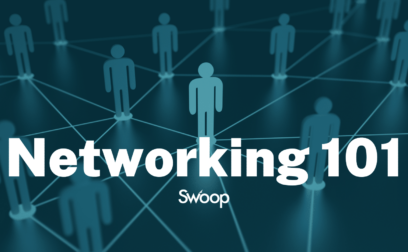TABLE OF CONTENTS
E-commerce is a big business in South Africa. Today, the online trading industry is worth $1bn in South Africa and is expected to grow.
One of the largest online platforms is Shopify, an e-commerce provider that hosts online stores for more than 14,500 South African manufacturers, retailers, artists, and charities. As e-commerce continues to expand, online businesses must naturally get bigger, but this can pose a problem for Shopify merchants who lack the funds to fuel growth. Fortunately, there’s a solution – e-commerce loans can give traders the cash they need to cover costs and expand their sales footprint. Read on to find out more about e-commerce loans from Shopify and a host of other lenders.
Shopify loans provide financial support for Shopify member businesses. The platform offers two short-term loan products: Shopify capital loans, and Shopify merchant cash advances. US businesses may choose from either product, but for South African businesses, merchant cash advances are the only option. Note that Shopify merchants cannot apply for a capital loan or a merchant cash advance unless they receive an invitation from Shopify to do so.
Let’s look at the way Shopify loans work:
Shopify determines available credit, fees, and interest rates on a case-by-case basis. The borrowed sum, fees, interest rate, and daily repayment rate are governed by the scale of merchant’s sales on Shopify and their risk profile. Generally speaking, the higher their sales on Shopify are, and the lower their risk profile is, the more merchants can borrow and the cheaper their costs will be.
Shopify offers merchant cash advances. (Also called a Shopify payments loan advance).
A Shopify merchant cash advance is a lump sum that merchants borrow in return for a fixed fee. To pay back the loan, Merchant’s send Shopify a percentage of their daily sales until the lump sum and the fixed fee are repaid. The lump sum that merchant’s may borrow and the amount they repay each day is determined by the scale of their sales on Shopify and their risk profile.
Shopify capital loans provide a lump sum to the merchant in return for a fixed borrowing cost. The loan amount plus the fixed borrowing cost is called the total owed. The loan amount is deposited into the merchant’s business bank account and then a percentage of their daily sales is sent to Shopify until the total owed is repaid.
The amount Shopify merchants can borrow from Shopify is based on the scale of their Shopify sales and their risk profile. The higher your sales and the lower your risk, the more you can borrow. However, Shopify does not recognise any sales that businesses may have on other e-commerce platforms, in brick-and-mortar stores, or from B2B activities. This means a significant percentage of merchant revenues are ignored by Shopify and therefore, Shopify loans may be smaller than some online merchants need.
Shopify loans can be used for a variety of business activities:
In South Africa, Shopify provides funds as a merchant cash advance. How does this work?
Example of a typical Shopify merchant cash advance:
After the merchant repays over 25% of the loan balance, they have the option to remit the remaining balance in a single lump sum.
Shopify loans are repaid from the merchant’s sales on the platform. No matter if the loan is a merchant cash advance, or a capital loan (US only), there is no deadline for paying off the total owed. Repayments will fluctuate in value depending on the scale of the merchant’s sales. The more they sell, the more they pay back each day and the faster they pay off the loan. If sales are slow, payments to Shopify reduce, and it takes longer to pay back the loan.
Shopify loans are available to Shopify merchants on an invitation-only basis. If they don’t ask you to apply, you can’t. This can leave some e-commerce merchants struggling to properly fund their business and missing out on trading opportunities.
Fortunately, other lenders offer loan products for Shopify traders without needing an invitation. These alternative loans include:
Similar to Shopify’s merchant cash advance. The sum you can borrow is based on the scale of your debit and credit card sales. Most lenders will offer a lump sum based on all card sales, and not just your sales on Shopify. This means the amount you may borrow could be higher. Repayment periods may be open-ended like Shopify, or fixed, (such as 12 months). Because the card sales act as security, there is usually no need for a personal guarantee or added collateral such as real estate. Poor credit may not be an obstacle to funding.
A term loan, typically for 1 to 3 years. Paid back in monthly instalments. The borrower must provide a guarantee or collateral to protect the lender. Poor credit is usually not an obstacle.
A term loan, also for 1 to 3 years. Paid back in monthly instalments. No collateral required. The loan is based on the borrower’s credit score and good credit is usually required. The maximum lump sum available may be less than with a secured loan and the interest rates and fees may be higher.
Large loans used to buy bulk inventory, plant, machinery, and commercial property. Ideal for Shopify manufacturers who wish to increase production, or retailers seeking to buy bulk inventory at discounted wholesale prices. Can also pay for workspace and storage space expansion. The asset is the loan security, so no added collateral required. Poor credit is usually not an obstacle.
Funds are lent against the value of the borrower’s accounts receivable. Suitable for traders who have B2B sales off the Shopify platform and where customers may be slow to pay. Receive up to 90% of the invoice value as soon as the bill is raised. The merchant’s invoices act as loan security. No added collateral is required, and poor credit is usually not an obstacle.
Works like a bank overdraft. The borrower can dip into an open credit facility as and when funds are needed. The borrowing is repaid from incoming business receipts. Personal guarantee and/or collateral may be required, especially where the borrower’s credit is less than stellar.
Credit cards for business use only. Often with higher credit limits and lower interest rates than cards issues to private individuals. No collateral usually required, but good credit may be necessary.
New to Shopify? Use a startup loan to secure seed cash to get your new business off the ground. Government funds may be available for this type of loan. No added collateral is required, but good credit may be necessary.
It’s hard to stand still in business. Your organisation either grows, or it shrinks. Clearly, growth is the desired outcome, but to get bigger requires investment and many online businesses do not have the cash to fund expansion. This is where borrowing makes sense. Alternative loans can power Shopify businesses to the next level via numerous strategies:
Before you apply for an alternative Shopify loan, make sure you have the necessary paperwork in order. Depending on the type of loan you want, the following may be requested by the lender:
Top Tip: Some lenders may ask for a personal guarantee by the business owners or directors to secure the loan. If they do, they will check their personal credit scores. Don’t get caught out by an error on your credit report, always check your business and personal credit scores before you apply.
Finding the right alternative loan for your Shopify business can be tricky. Do you need short-term or long-term borrowing? How much can you borrow? What about interest rates, fees, personal guarantees and collateral? Getting the right funds, at the best price, with the least risk, requires finesse and review of all the options. Choice is essential – and that’s where working with a broker pays off. Whereas individual lenders may only offer a small suite of loan products, brokers such as Swoop can give you access to multiple lenders and your choice from many types of loan.
No matter if you’re seeking funds to cover cashflow or bulk up your inventory, Swoop has the right Shopify loan for you. Even if you’ve been turned down elsewhere, it may still be possible to secure the funds you require. Apply in just a few minutes, and funds could be in your bank account in less than 24 hours.
Grow your online business at lightspeed. Get started with Swoop to secure a Shopify loan today.
Swoop was amazing! I was looking for refinancing and they were straight onto finding me the best possible option. I would highly recommend them.
Laree Smith
Owner, F45 Cambridge
Written by
Chris is a freelance copywriter and content creator. He has been active in the marketing, advertising, and publishing industries for more than twenty-five years. Writing for Barclays Bank, Metro Bank, Wells Fargo, ABN Amro, Quidco, Legal and General, Inshur Zego, AIG, Met Life, State Farm, Direct Line, insurers and pension funds, his words have appeared online and in print to inform, entertain and explain the complex world of consumer and business finance and insurance.
Swoop promise
At Swoop we want to make it easy for SMEs to understand the sometimes overwhelming world of business finance and insurance. Our goal is simple – to distill complex topics, unravel jargon, offer transparent and impartial information, and empower businesses to make smart financial decisions with confidence.
Find out more about Swoop’s editorial principles by reading our editorial policy.
Join the 110,000+ businesses just like yours getting the Swoop newsletter.
Free. No spam. Opt out whenever you like.
Kingfisher Way, Silverlink Business Park, Newcastle upon Tyne, NE28 9NX, UK
View in Google MapsAberystwyth Innovation and Enterprise Campus
Gogerddan Campus
Aberystwyth University
Ceredigion
SY23 3EE
Dogpatch Labs, The CHQ Building, Custom House Quay, Dublin, Ireland
View in Google MapsSuite 801, Level 8, 84 Pitt Street, Sydney, NSW 2000, Australia
View in Google Maps43 W 23rd St, New York, NY 10010, United States
View in Google Maps21 Dreyer Street, Cape Town, South Africa, 7708
View in Google MapsDisclaimer: Swoop Finance helps South African firms access business finance, working directly with businesses and their trusted advisors. We are a credit broker and do not provide loans or other finance products ourselves. We can introduce you to a panel of lenders, equity funds and grant agencies. Whichever lender you choose we may receive commission from them (either a fixed fee of fixed % of the amount you receive) and different lenders pay different rates. For certain lenders, we do have influence over the interest rate, and this can impact the amount you pay under the agreement. All finance and quotes are subject to status and income. Applicants must be aged 18 and over and terms and conditions apply. Guarantees and Indemnities may be required. Swoop Finance can introduce applicants to a number of providers based on the applicants’ circumstances and creditworthiness. Swoop Finance (Pty) Ltd is registered with CIPC in South Africa (company number 2023/820661/07, registered address 21 Dreyer Street, Cape Town, South Africa, 7708).
Clever finance tips and the latest news
Delivered to your inbox monthly
Join the 110,000+ businesses just like yours getting the Swoop newsletter. Free. No spam. Opt out whenever you like.




